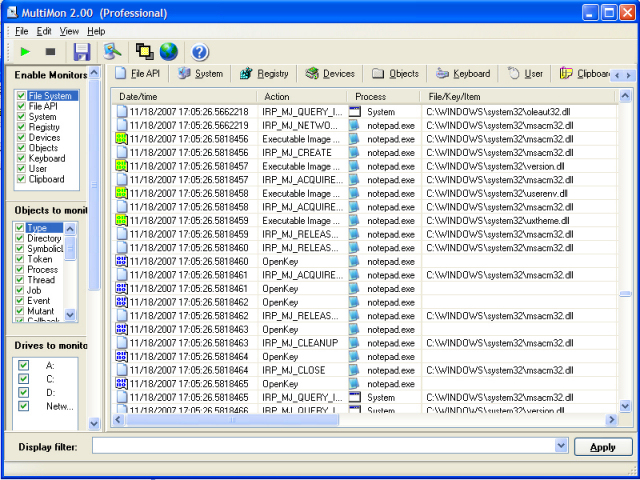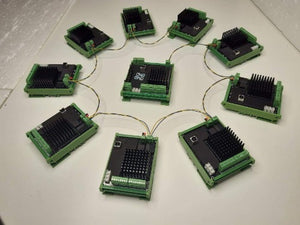

Their tight integration into our workspace supports fluent transitions between individual work and joint user engagement.

They provide independent views of a shared virtual environment and serve as access points for the exploration and manipulation of the 3D content.

#Multimon filter or windows#
We realized independent interaction territories in the form of handheld virtual viewing windows and multiple co-located hardware displays in a joint workspace. The motivation for such multi-focus workspaces is grounded in research on social cooperation patterns, specifically in the requirement for supporting phases of loose and tight collaboration and the emergence of dedicated working territories for private usage and public exchange. A particular focus of our developments lies in the provision of multiple independent interaction territories in our workspaces and their tight integration into collaborative workflows. This thesis reports on novel interaction patterns for collaborative 3D interaction for local and distributed user groups based on such multi-user projection environments. The users perceive the shared scene from their respective viewpoints and can directly interact with the 3D content. Multi-user projection systems provide a coherent 3D interaction space for multiple co-located users that facilitates mutual awareness, full-body interaction, and the coordination of activities. Analysis shows it is a better predictor than previous models. Using the experiment data, we formulate and evaluate a new Fitts’ model combining two spatial configurations in a SAR pointing task to capture key characteristics, initial target occlusion, target view angle, and user movement. Overall, results show raycast is fastest for non-occluded targets, direct is most accurate, and fastest for occluded targets in close proximity, and viewport falls in between. A second experiment validates and further generalizes findings by strictly controlling target occlusion and view angle in a simulated SAR pointing task using an AR HMD.

#Multimon filter or free#
Participants were permitted free movement, so variations in target occlusion and target view angle occurred naturally. A first experiment examines these techniques in a realistic five-projector SAR environment with representative targets distributed across different surfaces. Three pointing techniques are compared: raycast, viewport, and direct. We investigate mobile phone pointing in Spatial Augmented Reality (SAR), where digital content is mapped onto the surfaces of a real physical environment. These insights have implications for the design of multi-device experiences that support people's fragmented workflows. Our analysis also sheds light on the benefits and challenges people face when their workflow is fragmented across multiple devices. We characterize the wide range of multi-device physical configurations and identify five usage patterns, including: partitioning tasks, integrating multi-device usage, cloning tasks to other devices, expanding tasks and inputs to multiple devices, and migrating between devices. We surveyed 97 participants, and collected photographs of home setups and open-ended answers to 50 questions categorized in 5 themes. Further, this survey documents a historically significant moment of transition to a new future of remote work, an existing trend dramatically accelerated by the abrupt switch to work-from-home (and having to contend with the demands of home-at-work) during the COVID-19 pandemic. To better ground technical (systems) investigation and interaction design of cross-device experiences, we contribute an in-depth survey of existing multi-device practices, including fragmented workflows across devices and the way people physically organize and configure their workspaces to support such activity.


 0 kommentar(er)
0 kommentar(er)
